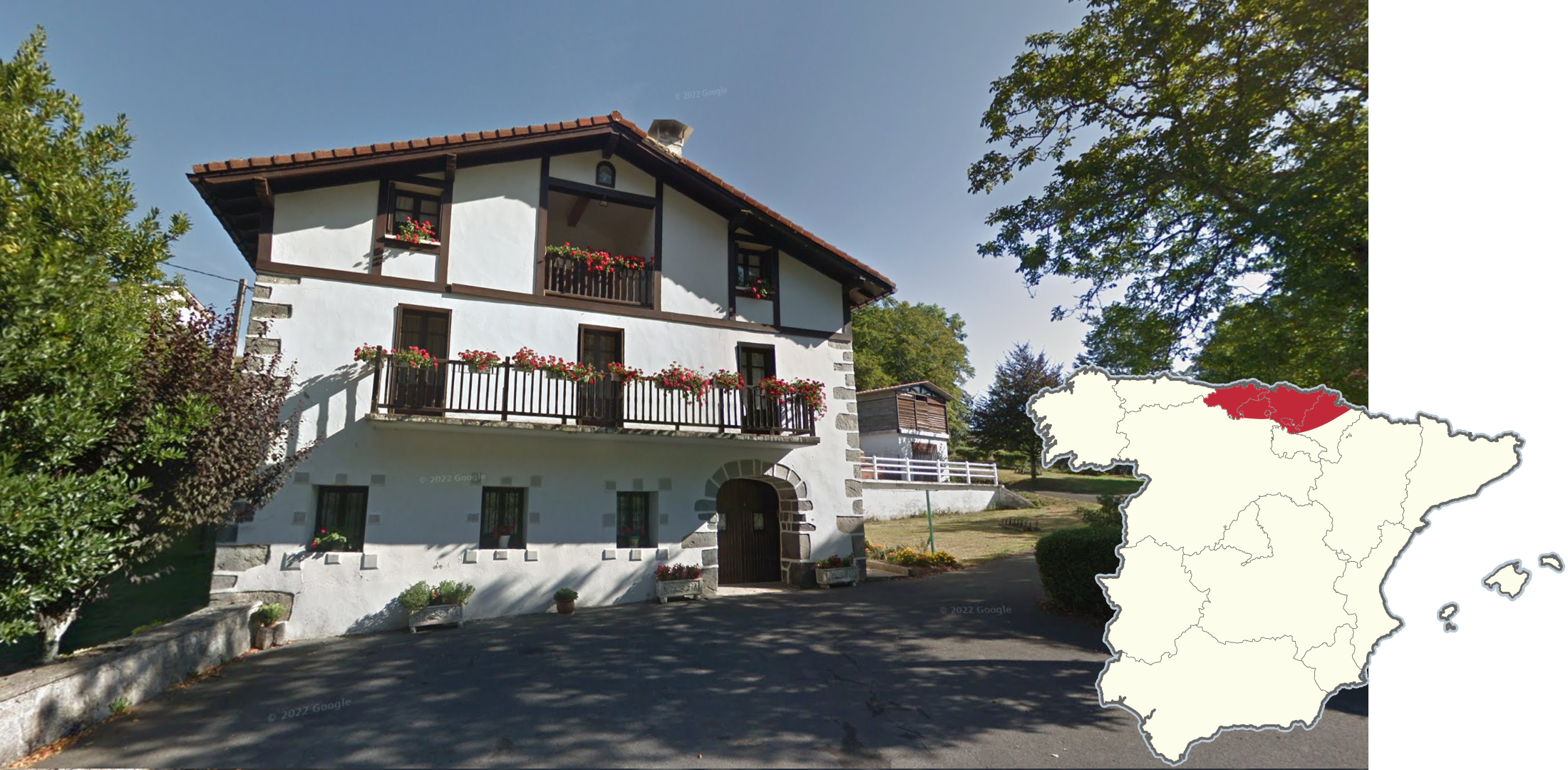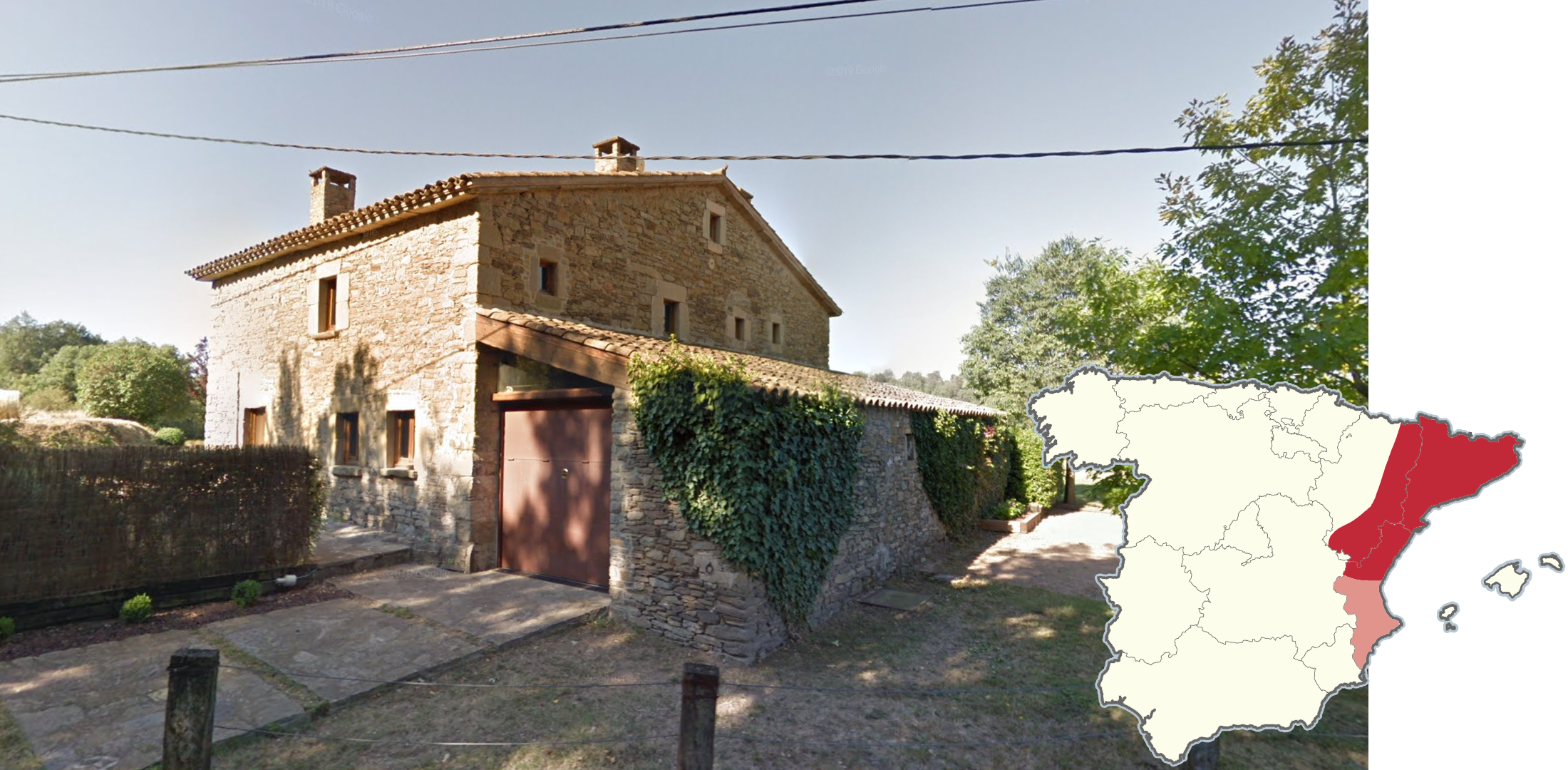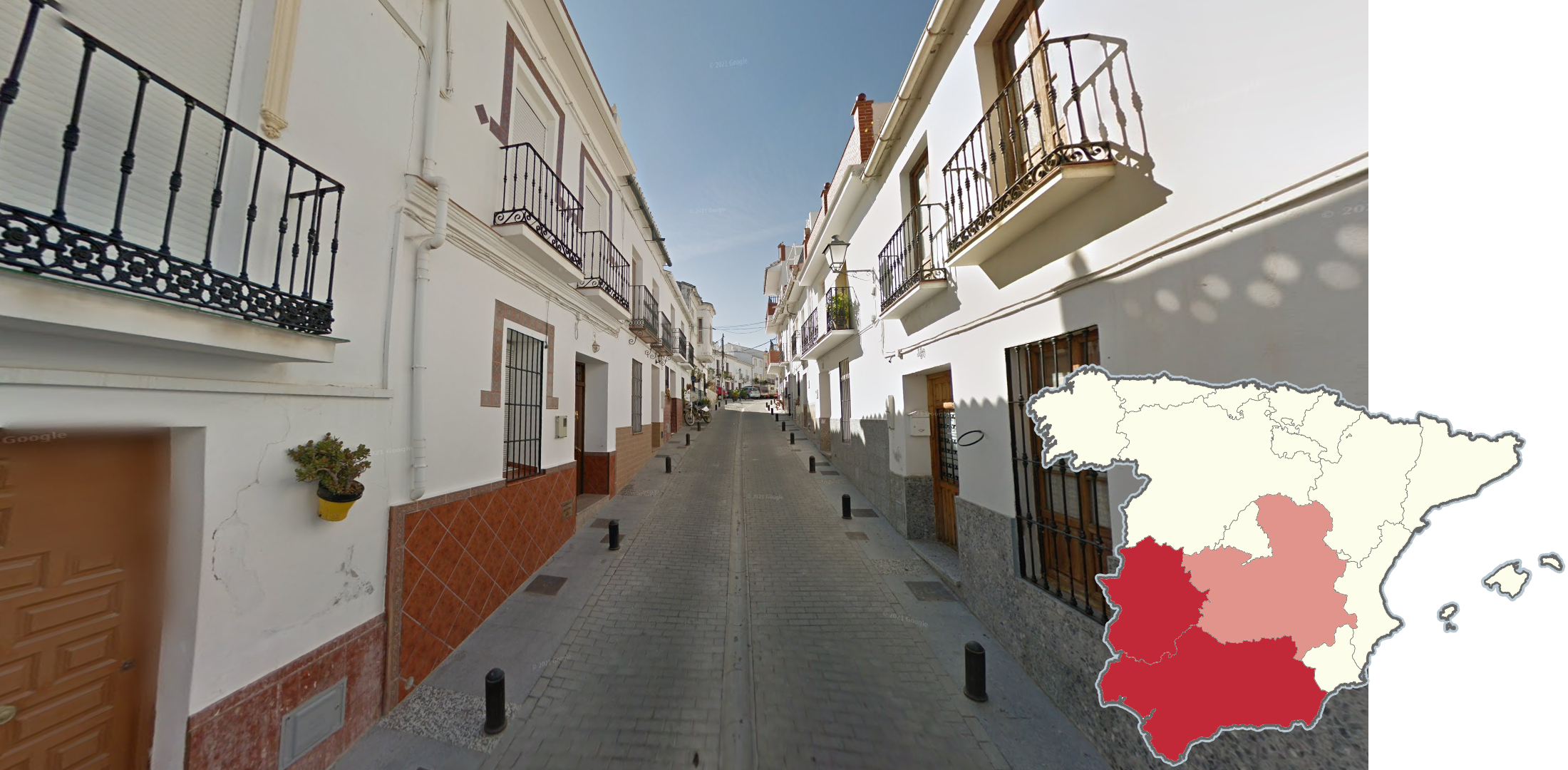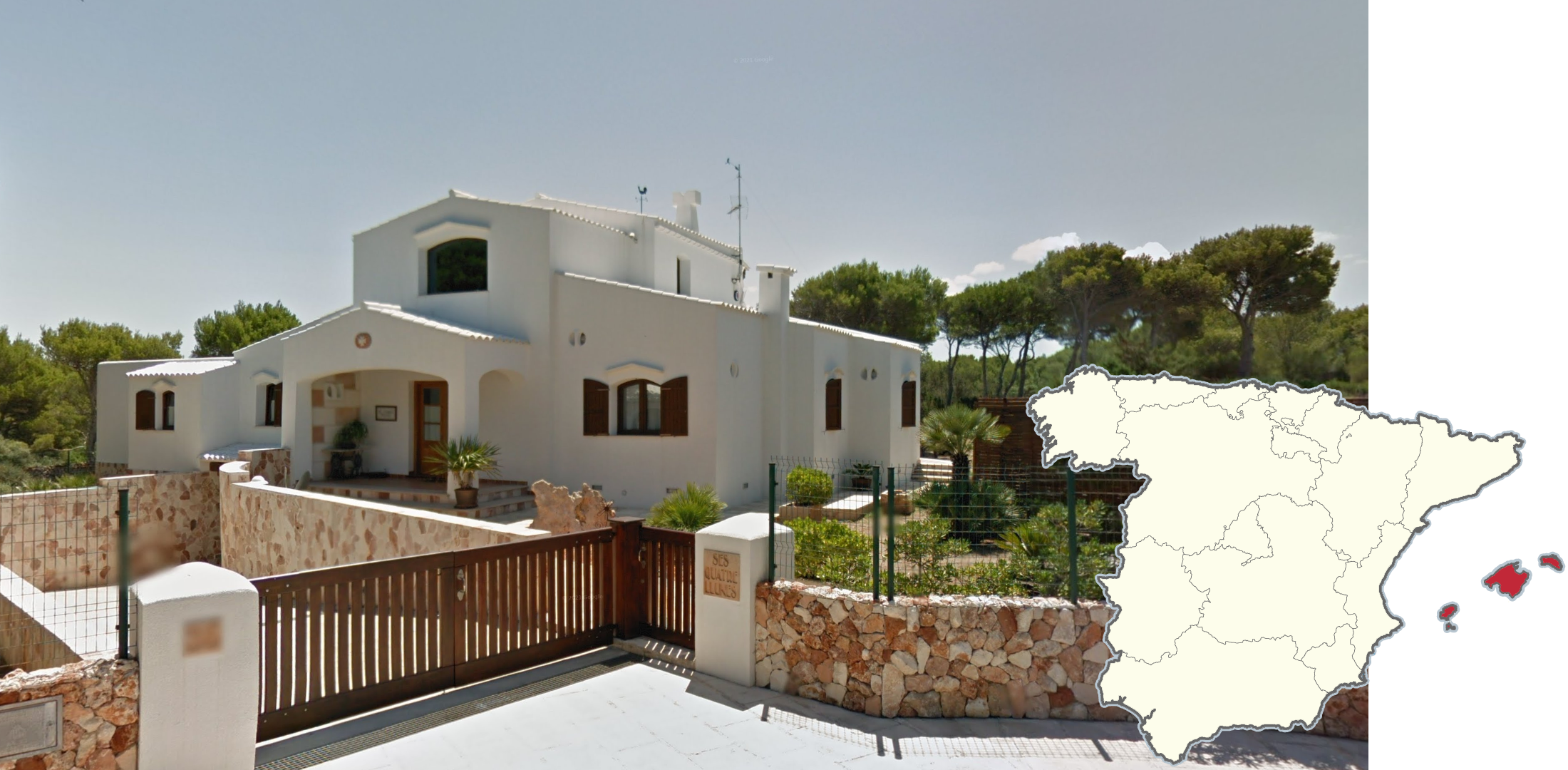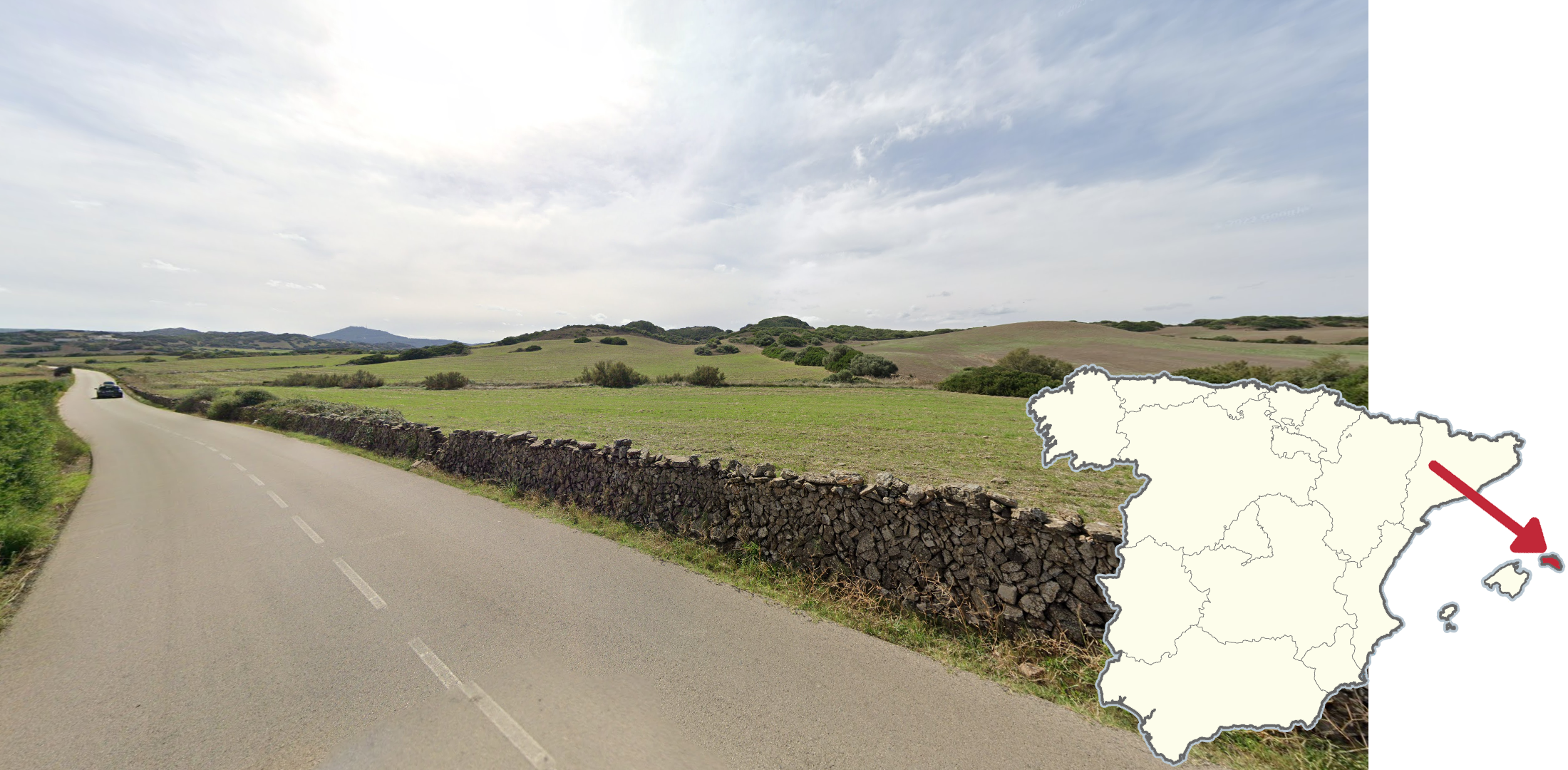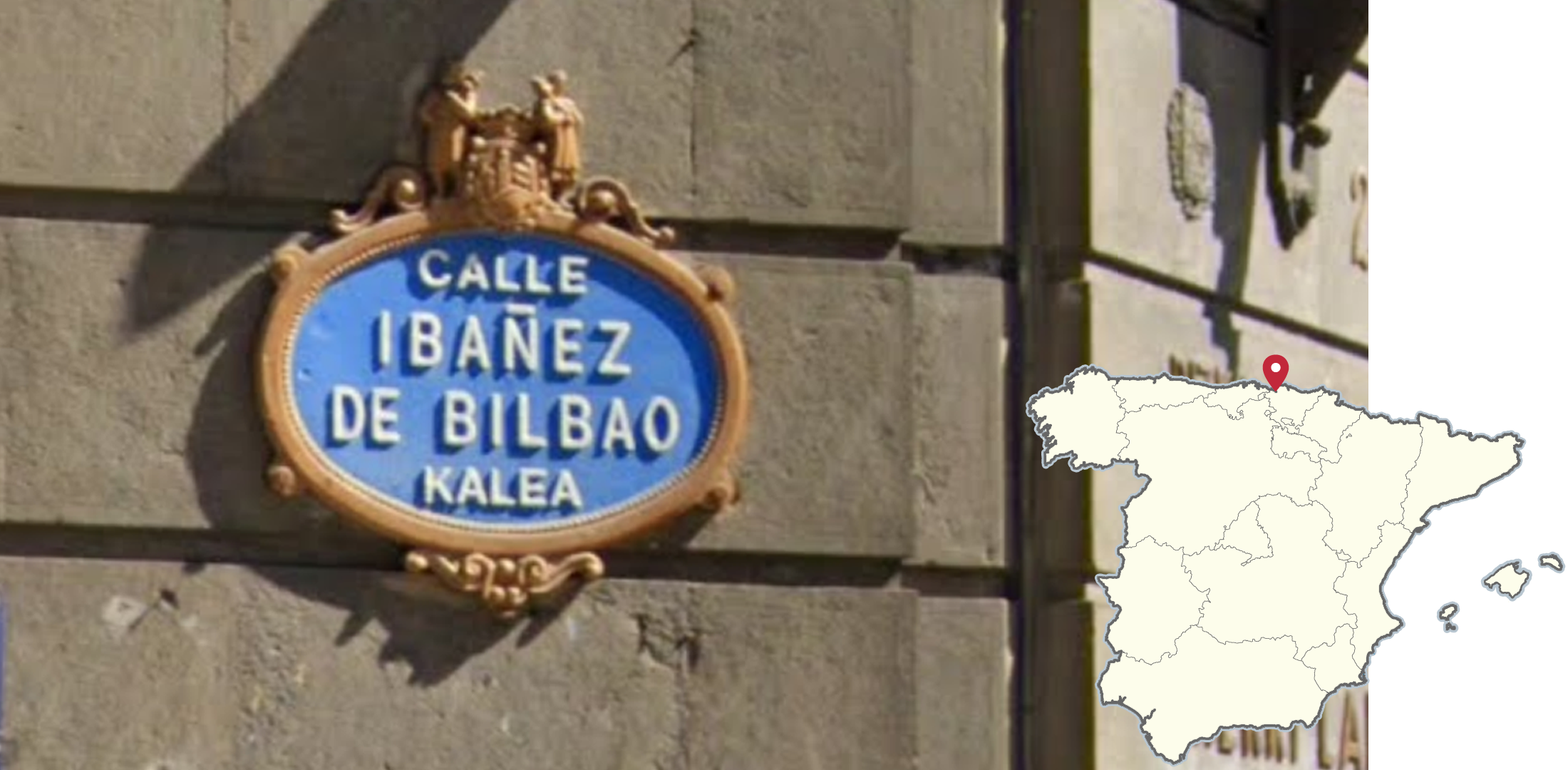
Spain
On small roads, particularly those without a middle line, roadlines can be a very good clue to determine where in the country a location can be.
In places where straight outer lines are prevalent you will very rarely find dashed outer lines.
In places where dashed outer lines are the main style, finding straight outer lines is rare, but less so than for the reverse.
Some provinces have their own style of roadline, such as Araba where simple long dashed middle lines are the most common style, or Gipuzkoa, where you can see long outside dashes in roads with a middle line.
Catalonia also frequently features atypical roadlines but there is not one prevalent design.
Most kilometre markers in Spain are either rectangular or square in shape. This can be a good clue to exclude half the country if you can see one in the distance.
There are also some unique designs.
Andalusian markers are especially tall, featuring an extra stripe with the name of the governing body responsible for the road.
Madrid markers are square and feature the regional flag at the top.
Markers in Biscay are bigger than usual and feature a semi-circle shape at the top.
NOTE: National roads will always have a red rectangular marker.
Kilometre markers in Spain feature a coloured border. The standard colours, going from bigger to smaller roads, are orange, green, and yellow.
Some autonomous communities and provinces use different colours, or even unique designs altogether.
You can read more about the unique designs in this document.
Most bus stops in Asturias have a red post with the CTA logo at the top.
NOTE: These may be confused with Madrid bus stops, which can also have a red post. The company in charge of Madrid public transport goes by EMT.
In Aragón, it is common to see this bollard design on regional roads.
It has a simple design, consisting of a short flat rectangular white stick with a grey reflector on both sides.
NOTE: There are similar bollards in other regions, but they appear much less frequently than in Aragón.
Many signs in Catalonia have round, corrugated signposts. This is especially common for direction signs. A similar design is also common in the Basque Country and the Balearic Islands.
Note that municipalities may use signposts like this anywhere in the country, and that regular traffic signs retain the standard flat Spanish design.
NOTE: French signs have a very similar design.
Within mainland Spain, this bollard is almost exclusive to the provinces of Lleida and Tarragona in Catalonia.
It features a more square and orange reflector on the front, compared to the standard Spanish bollard design. There is a white reflector on the back, instead of the two dots of standard bollards.
Some toll highways like the AP-6 also use this design.
NOTE: This bollard can also be found on the eastern half of the Canary Islands.
The surrounding region of Madrid has round topped red bus stops, and green buses. Some bus stops are just a red post.
In the city centre, you can find urban blue buses.
In Castilla la Mancha you can find stone markers with the region’s coat of arms lining up fields. It can be recognized from afar by the blue coloured left side and the unpainted right side.
There is a large part of north-west Spain where you will find almost exclusively slate roofs (recognisable by their almost black colour). This type of roofing can be seen sparingly all the way to the west coast of Galicia, but ends rather abruptly on the east.
Slate roofs can also be found in the Pyrenees near Andorra, and in the mountain ranges north east of Madrid.
In Asturias, “hórreos” are bigger, generally with a square design, and are built above four pillars, with or without walls. You will sometimes find a rectangular variation, usually built on top of six or eight pillars called “panera”.
If you find an “horreo” with a slate roof, you will be in western Asturias.
Traditional farm houses called “masías” are common in Catalonia, eastern Aragón and parts of the Valencian Community.
They are usually made of stone and stand isolated or as part of a small complex.
Mainland Spain - Miscellaneous
In Asturias you can find a black car with no antenna and a visible brake light.
NOTE: This car can very rarely spill into neighbour regions like Galicia.
Low rock walls are extremely common on the Balearic Islands.
NOTE: Another Mediterranean region with a similar amount of rock walls is the area around Bari in Italy. This region can sometimes look similar to the Balearic Islands.
The Canary Islands (or Canaries for short) are a Spanish archipelago off the west coast of Africa. Because they are so far away from mainland Spain, being able to consistently recognize them is important for your scores.
NOTE: Do not confuse their location with the nearby Portuguese island groups of the Azores and Madeira.
The Canaries have extremely diverse landscapes, including steep mountains, pine forests, volcanic soil, and extreme aridity. You can also encounter more normal landscapes that can look more like mainland Spain.
NOTE: Because of its diversity, it is hard to pin down the average landscape in the Canaries. A more useful strategy is to focus on whether it looks unique and unlike anything that you would find in mainland Europe: if meta matches with Spain, but something is “off” in terms of vibe, consider the Canaries.
In some parts of the island of Lanzarote on the Canary Islands, a very dark, exposed volcanic soil can be seen. In places, this landscape superficially resembles the surface of the moon.
NOTE: The other Canary Islands can sometimes have similar landscapes as well, but it is by far the most common on Lanzarote.
This unique bollard design is extremely common in the province of Las Palmas (which includes the islands of Gran Canaria, Fuerteventura and Lanzarote).
It features a more square and orange reflector on the front, compared to the standard Spanish bollard design. There is a white reflector on the back, instead of the two dots of standard bollards.
This bollard can also be found on mainland Spain, in the provinces of Lleida and Tarragona.
NOTE: The province of Santa Cruz de Tenerife (which includes the islands of Tenerife, La Gomera, El Hierro and La Palma) only uses bollards on highways, with the standard Spanish design.
Melilla also features similar North African architecture. The coverage in Melilla has a hazy look, with a significantly less saturated sky than Ceuta. Most of the coverage is cloudy or overcast.
Melilla has little rural coverage, mainly by the Morocco-Spain border.
The Camino de Santiago (the Way of St. James in English), is a network of pilgrim's ways across Europe leading to the shrine of apostle James (Santiago in Spanish) in Santiago de Compostela.
These paths are frequently marked with a yellow scallop on a blue background. Markers can be found both in traffic signs and in waystones.
It is common to see pilgrims hiking or biking along these routes, particularly during the summer.
NOTE: Markers for it can be found all over Europe, going as far as Lithuania, but are much more common the closer you are to Santiago.
Coverage during early spring on dirt roads between green grassy fields, and leafless vineyards with red soil, is very common in the central-north part of Castilla la Mancha.
This type of coverage is particularly extensive in the northern part and exclusively in generation 3. Towards the south you will also find very similar looking coverage in generation 4.
The AP-15 in Navarra features unique bollards with a simple flat design and a square red reflector. Guardrails also have red reflectors unlike the rest of Spain.
GeoGuessr’s own official maps are not very good, for a variety of reasons. Plonk It recommends the following map instead:
A Balanced Spain (map link) - 100k arbitrarily generated locations, spread evenly across the country. Balanced with streaking in mind. Not pinpointable.
In addition, here are some resources to help you practise Spain:
Plonk It Spain (map link) - This map contains locations for practising each meta in the Plonk It Spain guide from step 2 to 3.
Spain autonomous communities quiz (link) - Map-based quiz to help you learn the Spanish autonomous communities and their locations on the map.
Spain provinces quiz (link) - Map-based quiz to help you learn the Spanish provinces and their locations on the map.
Spain phone code quizzes (2 digits and 3 digits) - Map-based quizzes for the area codes found in telephone numbers.
Gorka1311’s Complementary Guide of Spain (link) dives deeper into car and coverage meta, as well as including a lot of miscellaneous tips not discussed in this guide.
























